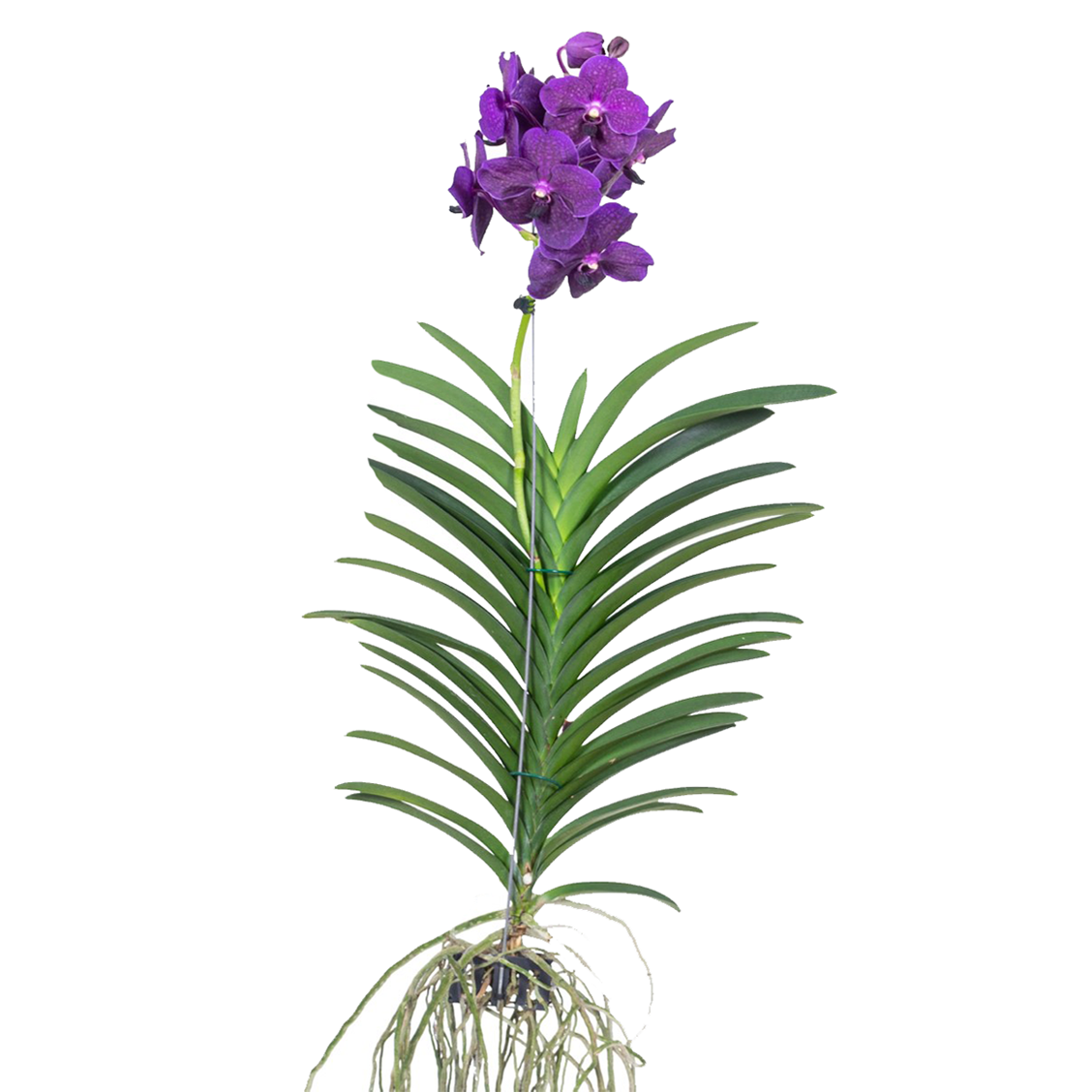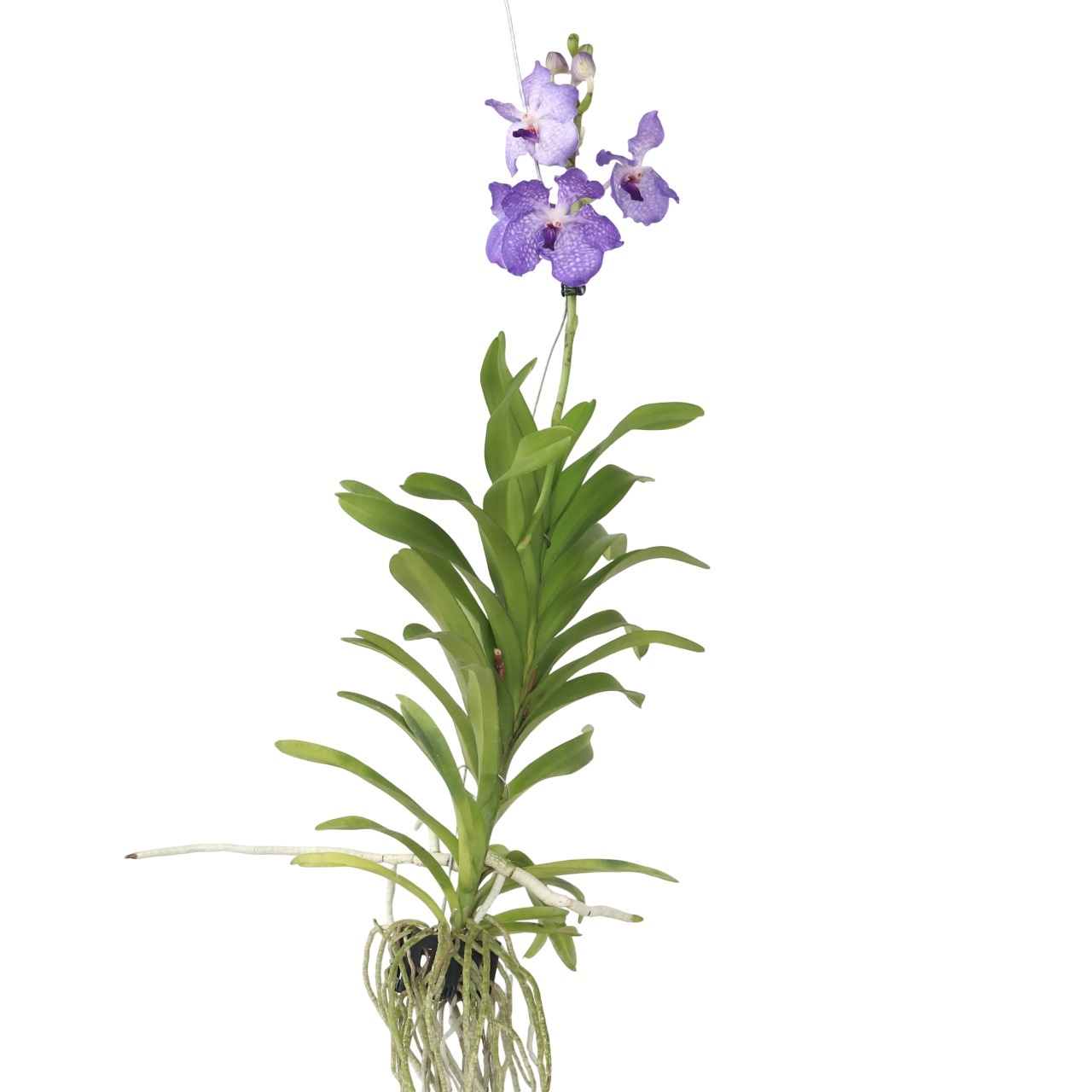
7 Proven Tips to Care for Orchid Plants Indoors | Keep Your Orchids Thriving Beautifully
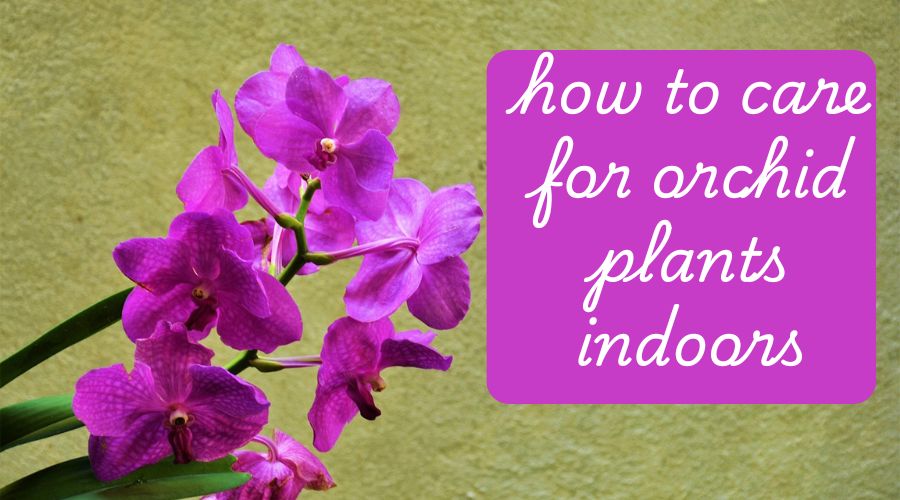
Introduction
Orchid plants are some of the most wonderful and mysterious plants on earth. With proper care—especially choosing the right ones for your light, humidity, and space—they make wonderful houseplants. For a beginner, select easy-care, low-maintenance types, such as moth orchid plants (phalaenopsis), or enjoy the sweet perfume of fragrant species, such as cattleya. Give them the bright, indirect light they thrive on. Maintain humidities of 40 to 70 percent and daytime temperatures of 70° to 80°F. Choose well-draining pots and potting media, such as bark-based mixes. Give your orchids a good drink, but keep them out of standing water to avoid root rot.
- Introduction
- Key Takeaways
- Understanding Orchids
- Our Top Picks from Floraqueen
- Our Top Picks from Flowersandplantsco
- Our Top Picks from Amazon
- Choosing indoor orchids
- Preparing Orchid Growing Supplies
- Setting Up the Ideal Environment
- Watering and Feeding Orchids
- Repotting and Pruning Orchids
- Caring for Orchids After Flowering
- Managing Orchid Pests and Diseases
- Conclusion
- Your Questions, Answered
Key Takeaways
Orchid plants care indoors starts with the right light, humidity, and watering. These beauties brighten up any space and make an excellent addition to bright, indirect light locations like spots near east- or south-facing windows.
Watering them about once a week based on the season will ensure your orchids do not become overwatered but their roots remain healthy and aerated. You can keep proper airflow and moisture balance by using a well-draining orchid mix.
By regularly wiping your orchid’s leaves you’ll remove any dust and your orchid will be able to absorb more light. When you follow these best practices, orchids thrive and can bring beauty and grace to your home.
Our Top Picks

Peaceful orchid plants:
Love, serenity, beauty, and strength are all symbolized by the delicate, exotic, and most elegant orchid. Express yourself fully and have a professional florist deliver your order now!

5 Live Orchid Plants-Cattleya, Oncidium, Dendrobium, Vanda, and Phalaenopsis:
They will be transported bare root; it's typical for the roots to be dry when you receive them. Before rewatering, orchids should be entirely dry. Please plant them in a high-quality orchid medium after soaking them in lukewarm water for a few minutes.

DecoBlooms Premium Blue Orchid Live Indoor Plant:
Stylish and Safe Packaging For optimal protection, this premium orchid plant, which is 12" to 24" tall, is thoughtfully arranged in a stylish Deco Blooms box using cutting-edge packaging technology.

From You Flowers - Sunny Smiles Orchid Duo for Birthday:
As a varied group of flowering plants, orchids can have widely differing blooming times based on the species or hybrid. The following broad rules describe how long orchids usually bloom.

6 inch Round Ceramic Orchid Pot with Holes Orchid Planter:
Because orchid plants are extremely sensitive to waterlogging, orchid pots with drainage holes at the bottom have a fleshy root structure and a greater capacity to store water. Therefore, when the flowerpot's bottom hole is easily drained, maintenance should be used.

Novelty Phalaenopsis Live Orchid Plant 20-24" & White Orchid Pot Live Plant Gift:
LIVE ORCHID PLANTS: A vibrant live orchid plant in a chic 5" white orchid planter will add flair to your house. For true plant lovers who enjoy cultivating live indoor plants, indoor orchids are simple plants that are ideal. It has never looked so lovely to order house plants on Amazon.
Understanding Orchids
orchid plants are one of the most diverse and fascinating families of flowering plants, known for their ornate blooms and ability to thrive in nearly every environment on the planet. With more than 25,000 species and innumerably more hybrids, they hold the fascination of green thumbs both novice and expert.
i. What Are Orchid Plants?
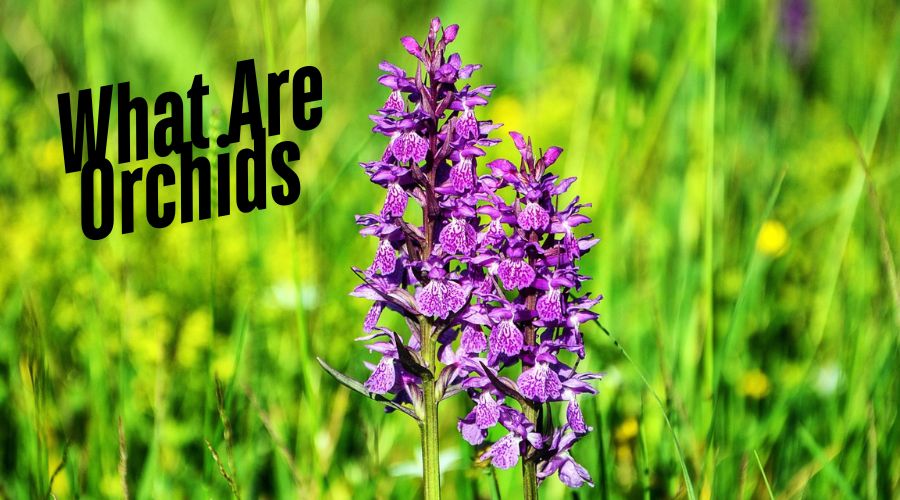
orchid plants can be found either as epiphytes, growing on the surface of trees, or as terrestrial plants, rooted in the ground. Pollination is essential for their reproduction. This imperative has led to a breathtaking diversity of floral forms, each one tailored to lure a particular pollinator.
Common features of these plants are thick, fleshy roots that store water. Depending on their habitat, the leaves can be very different. Some are thin and strap-shaped, while others can be thick and leathery.
Our Top Picks

Purple Phalaenopsis Live Orchid Plant Lover Gift & White Orchid Pot, 11-15" Tall:
LIVE ORCHID PLANTS: A vibrant live orchid plant in a chic 3.5" white orchid planter will add flair to your house. For true plant lovers who enjoy cultivating live indoor plants, indoor orchids are simple plants that are ideal. It has never looked so lovely to order house plants on Amazon.

DecoBlooms Premium White Orchid Live Indoor Plant - 5 inch Blooms:
Stylish and Safe Packaging For optimal protection, this premium orchid plants, which is 20" to 30" tall, is thoughtfully arranged in a stylish DecoBlooms box using cutting-edge packaging technology.

Orchid Pot, 6.5 inch Large Orchid Pots with Holes for Healthy Growth and Easy Repotting:
LIGHTWEIGHT CERAMIC ORCHID POT: Made from premium ceramic, the Fayoula orchid pot for repotting weighs just 2.2 pounds and is both strong and portable. Because of its ease of handling and mobility, your orchids will always have the ideal location to thrive.

eflowerwholesale - Premium Cut Blue orchid plants :
The eFlowe wholesale vase is accompanied by a rhinestone mesh ribbon. Only a 4" water tube and a personalized eFlower Wholesale Ribbon will be shipped to guarantee a seven-day freshness.

Fresh Cut Flowers -Dendrobium Purple Orchids with Vase Gift for Birthday:
Fresh Cut Flowers: Dendrobium Purple orchid plants in Vase as a Birthday, Anniversary, Sympathy, or Get Well Present

From You Flowers - Posh Purple Orchid Plant for Birthday, Anniversary:
Although the ceramic pot's suitability for outdoor use isn't stated in the product literature, orchid plants typically prefer indoor settings with indirect sunshine and temperatures between 65°F and 85°F.

From You Flowers - Graceful Mini Orchid for Birthday:
Brand From You Flowers Color Pink,Taupe,White Sunlight Exposure indirect sunlight
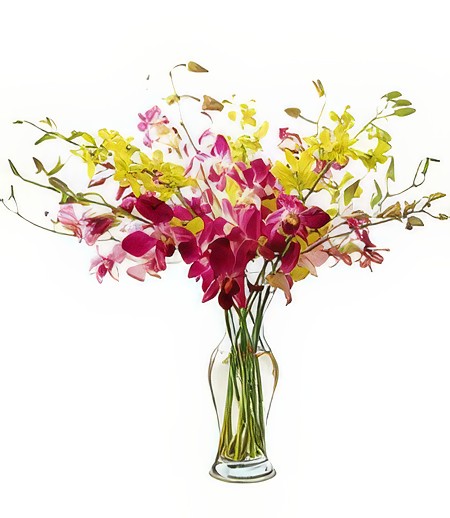
Island of Orchids:
The vibrant colors of the orchid plants enhance the aesthetic appeal of any living space, creating a lively atmosphere. Each bloom's unique charm adds variety and interest to home decor.
ii. Types of Orchids
Popular orchid plants varieties like Phalaenopsis (moth orchids), Dendrobium, and Cymbidium are mainstays in indoor gardening. Monopodial orchids grow up from a central vertical stem. Sympodial orchids grow sideways and have several growth points.
Care requirements are different, too. Tropical orchids like Phalaenopsis enjoy higher humidity and warmth, whereas temperate varieties like Cymbidiums do best in cooler, more controlled conditions.
iii. How do orchid plants grow indoors?
With south- or east-facing windows offering the most beneficial conditions, indoor orchid plants bloom best in bright, indirect light. Beginners often gravitate towards Phalaenopsis for their low maintenance, while experienced growers may explore intricate species like Cattleya or Oncidium.
Equally, a well-balanced indoor collection can bring a continuous supply of blooms in every color and pattern imaginable to brighten any living space. Seasonal temperature modification and weekly applications of a diluted light fertilizer help them flourish.
Choosing Indoor Orchids
Choosing the best orchid for your indoor environment is a crucial first step. With more than 250 species of native orchid plants in North America, you won’t run out of variety anytime soon. That said, some species are more adaptable for the indoor setting, providing beauty with an added touch of practicality.
i. Best Orchid plants Varieties for Indoors
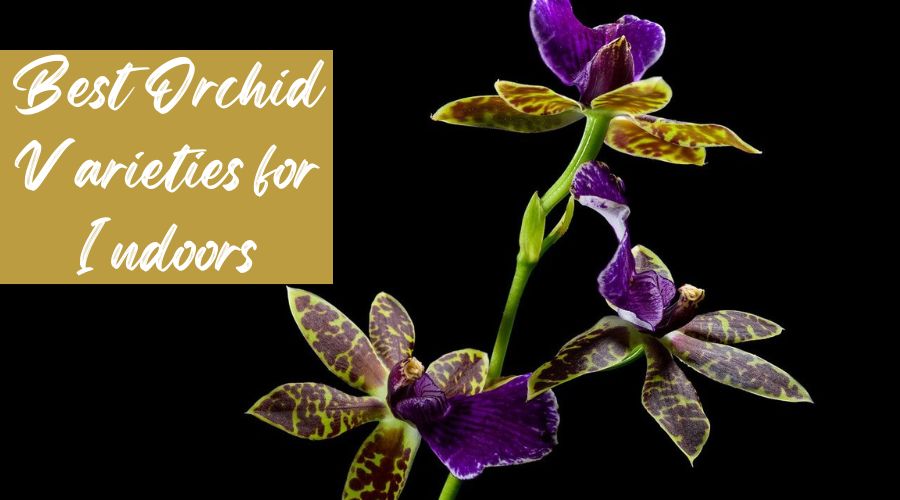
Moth orchids (phalaenopsis) are one of the best orchid plants for beginners because they’re easy-care and bloom all year long. For an extra sensory bonus, look for fragrant varieties such as cattleya orchids that can perfume a room with their delightful scent.
When selecting, consider the light conditions in your space. Bright, indirect light is preferable for most orchid plants, though some such as dendrobiums can survive in a little less. Warm growers, such as vandas, prefer 70–85°F, while cool growers like cymbidiums do better in 50–70°F ranges. Humidity, preferably 40–70%, plays a significant role in healthy growth as well.
ii. Factors to Consider When Choosing orchid plants
Choosing the right tools and materials will help you succeed with your indoor orchid plants. Start with pots with drainage holes. Collect potting media such as bark or sphagnum moss, and have your watering methods — like a spray bottle — on hand.
Repot any new orchid plants as soon as you get them. Repotting new orchids as soon as they arrive is a crucial step. Reuse of containers is fine, but if the root mass doesn’t fit it anymore, move up to a pot one or two sizes bigger.
Preparing Orchid Growing Supplies
Providing the best possible environment for your orchids starts with using the right orchid plants growing supplies. Pots and potting media, tools, fertilizers—each item contributes to overall healthy growth, and they are all vital to the process. Spending extra time to select these pieces thoughtfully will keep your orchids happy and healthy indoors.
Our Top Picks

Real Touch Faux Orchid Plant for Home Office Living Room Table Decoration:
Versatile in Design & Decor: The silver pot that comes with the faux orchid plants is the ideal size and will look fantastic in your living area, kitchen, office, or bathroom.

Triple Phalaenopsis Orchid in Glass Vase:
A stunning, realistic plant that adds year-round greenery to any room or area is the HOME DECOR ACCENT.

Light Pink Phalaenopsis Orchid with Silver Pots Real Touch Faux Orchid Plant :
authentic-looking Appearance & Real Touch: The artificial orchid plants blossoms have a smooth texture and some fern grass and false moss in the pot.

Purple Phalaenopsis Orchid with Silver Ceramic Pots Real Touch Faux Orchid Plants:
Realistic Appearance and Real Touch: The soft-textured artificial orchid plants blossoms include a little artificial grass in the planter, which gives them a more lifelike appearance.

Blue Phalaenopsis Large Orchid plants with Silver Ceramic Pots Fake Orchid Flower:
Premium Material: The stems of the imitation orchid plants are sturdy plastic, while the flower heads and foliage are composed of fabric cloth.

Blue Phalaenopsis Faux Orchid with Gold Pots Fake Orchid Plants:
Low Maintenance & No Seasonal Variations: The blossoms of the phalaenopsis orchid plants don't need any frequent attention.
i. Selecting the Right Pots
So, orchid plants require pots that allow for good drainage, so they don’t develop root rot. Choose pots with several drainage holes to allow the roots to dry out between waterings. This is especially true with clear plastic pots, which let you monitor both moisture levels and root health. Give a gift basket filled with tea and a lovely miniature orchid to someone special to celebrate!

ii. Choosing Suitable Potting Media
The potting mix has a direct impact on how your orchid’s roots get air and moisture. Bark-based potting mixes work well for orchid plants that require high drainage and airflow, such as Phalaenopsis orchids.
Higher moisture retention orchid plants that tend to like a bit more moisture, like Paphiopedilum, do well in moss-based media. Many experienced growers try their hand at soilless mixes developed for particular species. Select the correct media to suit your orchid’s specific requirements for the best results.
iii. Tools and Accessories for Orchid Care
Trustworthy resources help demystify orchid plants care. Pruning shears can cut dead roots or leaves, and moisture meters will let you know exactly when to water. A watering can with a long, narrow spout provides good control.
Invest in a humidity tray or misting system to keep humidity levels high for your orchids. Most tall orchids will need some kind of stake/clip system to hold up the stems during flowering.
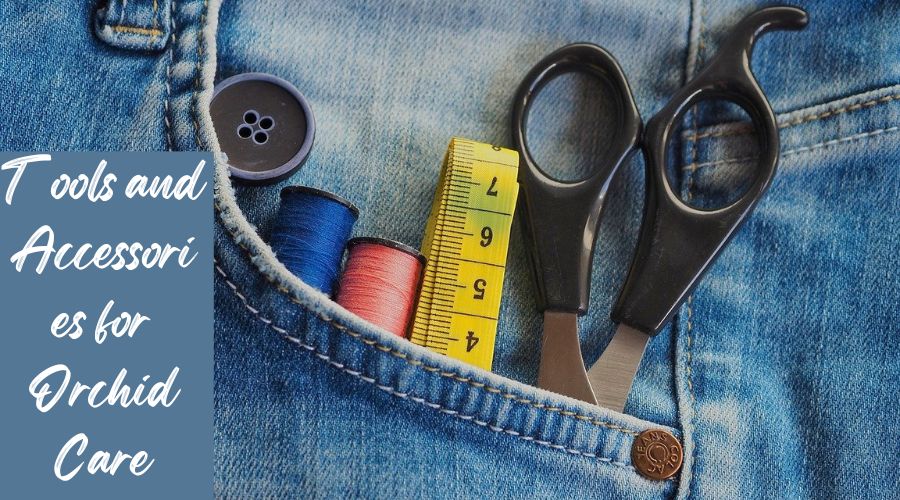
iv. Importance of Grow Lights and Fertilizers
Since grow lights can create controlled light in darker areas, they help achieve robust and healthy photosynthesis.
Fertilizers are needed to provide balanced nutrition, like the MSU orchid plants fertilizers. They all have different schedules, but many growers recommend weak, weekly feedings during the active growth period.
v. Creating the Perfect Environment
orchid plants do best in environments with consistent humidity and filtered light. Don’t leave them in the draft or set them next to heating vents. Keeping a close eye on temperature and humidity will help you maintain the right environment, particularly during seasonal transitions.
orchid plants can withstand short-term heatwaves, but continued extended heat would likely start to stress the plant.

Setting Up the Ideal Environment
Setting up the ideal environment is key to growing orchid plants successfully inside. These plants are very particular to their environment, and even minor changes can really impact the welfare of these plants and their ability to bloom. The sections below outline some of the most important considerations to set you up to deliver the highest standard of care.
i. Light Requirements for Orchids
orchid plants require strong, indirect light to encourage flower production without burning the foliage. The best windows for this are south- and east-facing windows, since these provide even, bright light all day long. To diffuse glaring sunlight coming from south- or west-facing windows, sheer or light-filtering curtains are a great option.
Indoor light is just one-third as intense as outdoor shade on a bright sunny day. Which is why it’s so important to bring in as much indirect light inside as possible! Placing orchids by north- or east-facing windows will also offer consistent light, without the chance of overexposure.
ii. Maintaining Proper Temperature
Temperature is one of the most important caring factors for orchid plants. Most orchids, like Phalaenopsis and Vanda, prefer warm daytime temperatures around 70°F to 80°F—cooler-growing types such as Cattleya and Oncidium like it a little more moderate at 65°F to 75°F.
At night, temperatures ideally need to be 60°F for warm-growing orchids or around 55°F for the intermediate varieties, reenacting the conditions they’d experience in the wild. Seasonal variation is key too—warmer summers and cooler winters go a long way to reproducing the conditions of their native habitat.

iii. Ensuring Adequate Humidity Levels
Your orchids need humidity levels of 40% to 70%, so keeping that humidity range stable indoors is very important. Using a humidifier or placing trays filled with water around the plants can help boost the humidity around them.
For an easy fix, cluster orchid plants to form a microclimate with increased humidity. Keeping a close eye on humidity levels is key during dry seasons. It’s even more essential in houses that use central heat, which can really dry the air out.
iv. Watering orchid plants Effectively
A regular watering schedule is essential for thriving orchid plants. Monitor the potting medium to know when to add more moisture. If it’s dry when you touch it, it’s time to drink.
In cooler months, water your orchids weekly. During warmer growing seasons, water more frequently, up to twice a week. Water well until some drains out the bottom, making sure the roots are well-watered but not waterlogged.
Watering and Feeding orchid plants
Watering and feeding orchid plants indoors is key to providing proper care. These practices are essential to keeping the plants healthy and encouraging them to thrive. Read on for our complete watering and feeding guide to keep your orchids happy and healthy.
i. Common Watering Mistakes to Avoid
Overwatering is perhaps the most typical mistake made when growing orchids. It usually results in yellow leaves and/or root rot. The second most common error is having standing water in the pot, which causes rot.
Instead, make sure that the pot you use drains well. orchid plants love to be well-aerated, so you’ll want to ensure that your plant’s roots dry out completely in between waterings.
Don’t water as often in the cooler months, since orchids require less water when they are not in an active growth cycle.
ii. Fertilizing orchid plants for Healthy Growth
Fertilizing orchids requires using a balanced fertilizer, e.g., 20-20-20 during the growing season, at a quarter-strength formula every week. orchid plants grown in bark will respond well to a nitrogen-rich fertilizer such as 30-10-10.
As a general rule, you should always fertilize after watering to avoid orchids being harmed by concentrated nutrients. During periods orchids are not in bloom or actively growing, cut down feedings to once a month or every other month.
Mature orchids need to be fed less often, too.
iii. Best Practices for Feeding orchid plants
Liquid fertilizers are best for orchids because they provide even distribution of nutrients. Seasonal adjustments matter too. Cut back on feeding in the winter, when growth has slowed down, and up the dosage in the spring and summer when orchids are most vigorous.
Repotting orchid plants is necessary when roots grow too large for the container or the potting medium starts to break down. Cutting off dead leaves and stems is just as essential to keeping your plants in peak condition, allowing for improved airflow and new growth.
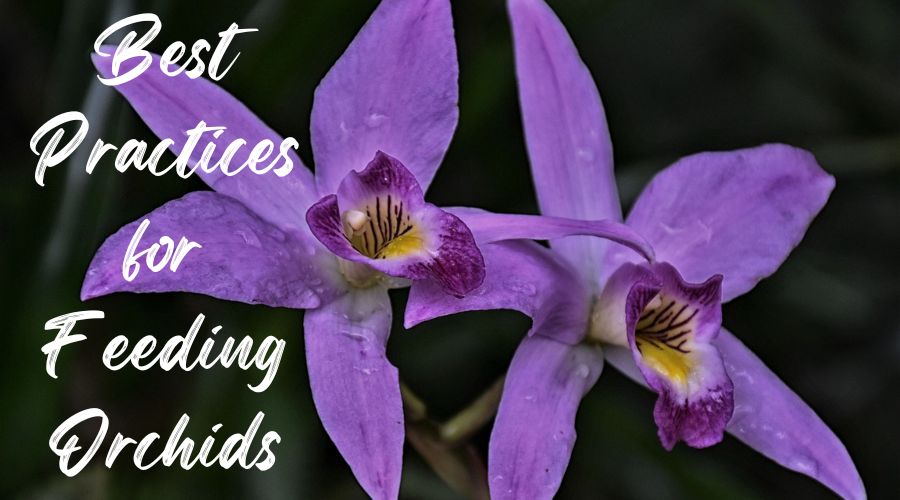
Repotting and Pruning orchid plants
Orchid care inside is more than frequent watering and offering bright, indirect light. You need to repot and prune them in order to maintain their health and encourage blooming. These repotting and pruning techniques will keep your orchid plants healthy and beautiful while correcting poor root conditions, overcrowding, and general plant upkeep.
i. When to Repot orchid plants
Repotting should be done every 1-2 years. In addition to the above reasons, you should repot when the potting medium breaks down and is no longer able to hold moisture. Signs of overcrowding, roots visibly growing out of the bottom drainage holes, or a medium’s breakdown are all good signs.
The best time to repot is soon after flowering, this reduces the stress on the plant. Carefully take the orchid plants out of its old pot, being careful not to break the roots. Always use sterilized equipment to trim any dead or decayed roots, because this helps prevent spreading disease.
Choose a pot that is a little bigger than the pot you used previously. Next, add a well-draining repotting medium like bark or sphagnum moss. Provide a way for the plant to be stabilized while it establishes new roots.
ii. Steps to Repot orchid plants Safely
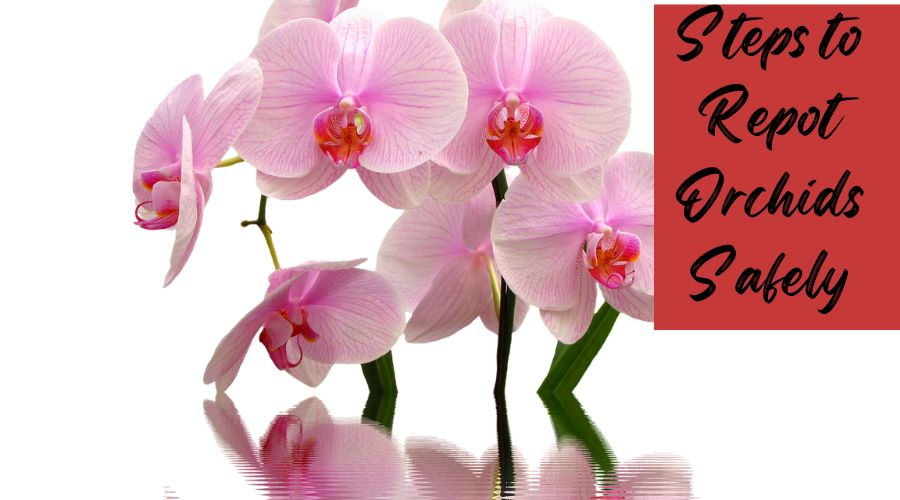
Begin the process by using clean, sterilized tools to prevent the spreading of diseases to your orchid. Prune dead roots, rotting root systems and cut back spent flower spikes to encourage new growth.
To start, orchids love when you prune away any yellowing or damaged leaves—this helps create a beautiful plant and protects your orchid plants from disease. To propagate your orchid, in early spring you can divide the pseudobulbs before new growth begins.
iii. Pruning Techniques for Healthy Orchids
Pruning aids in the upkeep of the orchid’s structure, and it promotes growth of new blooms. After blooming has finished, water a little less as the orchid plants goes into a rest period. This change helps the plant recuperate and brings the plant into a healthy state to rebloom.
Timely pruning prevents orchids from growing leggy and improves their aesthetic quality. It clears away dead flowers and foliage which further helps prevent disease. Over time, careful pruning practices will result in reliable, profuse blooms season after season.
Caring for Orchids After Flowering
Once an orchid has finished blooming, it’s time to change its care routine. Instead, concentrate on maintaining overall plant health and preparing your orchid for a productive upcoming flowering cycle. Although the colorful flowers will eventually drop, the orchid’s shiny green leaves continue to make the plant beautiful long after the flowers have passed.
With the right treatment after flowering as well as a little patience, orchid plants can live long, healthy lives, producing beautiful blooms year after year.
i. Fertilize Lightly to Support New Growth
After flowering, orchid plants need nutrients to help them rebuild their energy stores. When using orchid fertilizer, dilute it to 25 to 50 percent strength. Apply it once a month, and you’ll boost the overall health of your orchid’s leaves and roots while avoiding overstimulating the plant.
This step is important when it comes to making sure new growth is triggered, but over-fertilizing can actually impede development. For instance, selecting a liquid fertilizer that is specifically labeled for use on orchids will provide the right nutrition in the proper balance.
ii. Maintain Consistent Humidity and Temperature
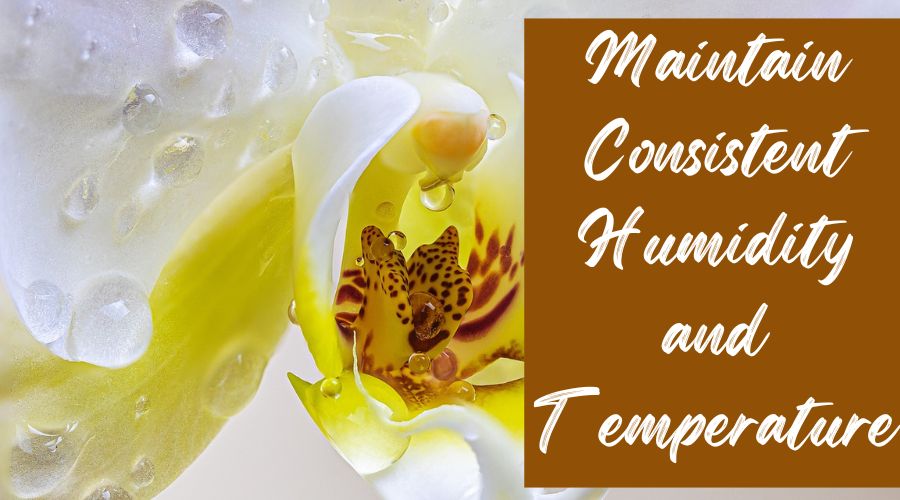
orchid plants do very well in more normal indoor climates of about 40-60% humidity. A small humidifier or a tray of water placed near the plant should be enough to keep the air humidity at the proper level.
For temperature, target 65°F to 75°F, particularly when they are in their resting period. Having that uniformity prevents the plant from going into stress mode and helps induce new spikes.
iii. Post-Bloom Care Tips
- Provide less bright light. A little reduction in nighttime temp, ideally 60-65°F, will assist in signaling the plant to start its next bloom cycle. This recreates the orchid’s native environment, stimulating the development of a new flower spike.
- Orchids do best in a well-lit area with plenty of indirect, bright sunlight. Keeping them close to an east-facing window provides the perfect solution—direct sunlight for part of the day, too much direct sunlight will burn the leaves.
Managing Orchid Pests and Diseases

The best approach to pests and diseases is always preventative. While healthy plants will always do best in clean orchid environments, even with the best of care problems happen. Identifying their early symptoms and acting quickly can help you keep your orchid looking beautiful and healthy.
Conclusion
With a little understanding and care, growing orchids indoors can be an enjoyable, easy experience. Know what your orchids require and select the proper species to fit your environment. Create an ideal environment and you’ll provide them a much better chance to flourish! Routine watering, feeding, pruning, and re-potting of your plants will help them thrive. By being vigilant towards pests and other ailments you can prevent problems from arising. Once they are done flowering, a bit of patience and attentiveness get them ready to blossom once more.
Your Questions, Answered
What type of orchid plants are best for indoor care?
Phalaenopsis (moth orchids) are perfect for first timers. They make wonderful indoor plants because they are so low maintenance and bloom for several months at a time.
How often should I water my indoor orchid plants?
Water it once a week, but make sure the potting mix dries out completely before watering it again. Excess water will drown roots which can lead to root rot.
What is the best light for orchids indoors?
Orchids prefer warm and humid conditions, with bright but indirect light. Keep them close to an east-facing window for the perfect balance. Do not place in direct sunlight, as this will burn the leaves.
Related Post

10 Effective Ways to Improve Your Time Management Skills
Our editorial team individually chooses every product that is suggested on obonappetite. We might get paid if you buy something

Crispy Chicken Samosa Recipe | Easy, Flavorful & Perfect for Snacks
Our editorial team individually chooses every product that is suggested on obonappetite. We might get paid if you buy something

How to Make Spring Rolls and Peanut Sauce | Fresh, Crunchy and Flavorful Recipe
Our editorial team individually chooses every product that is suggested on obonappetite. We might get paid if you buy something

